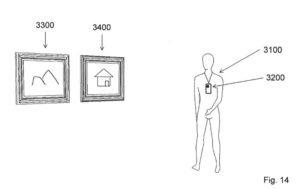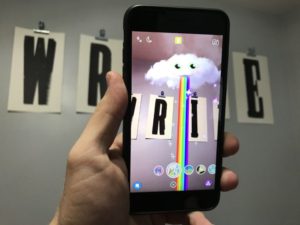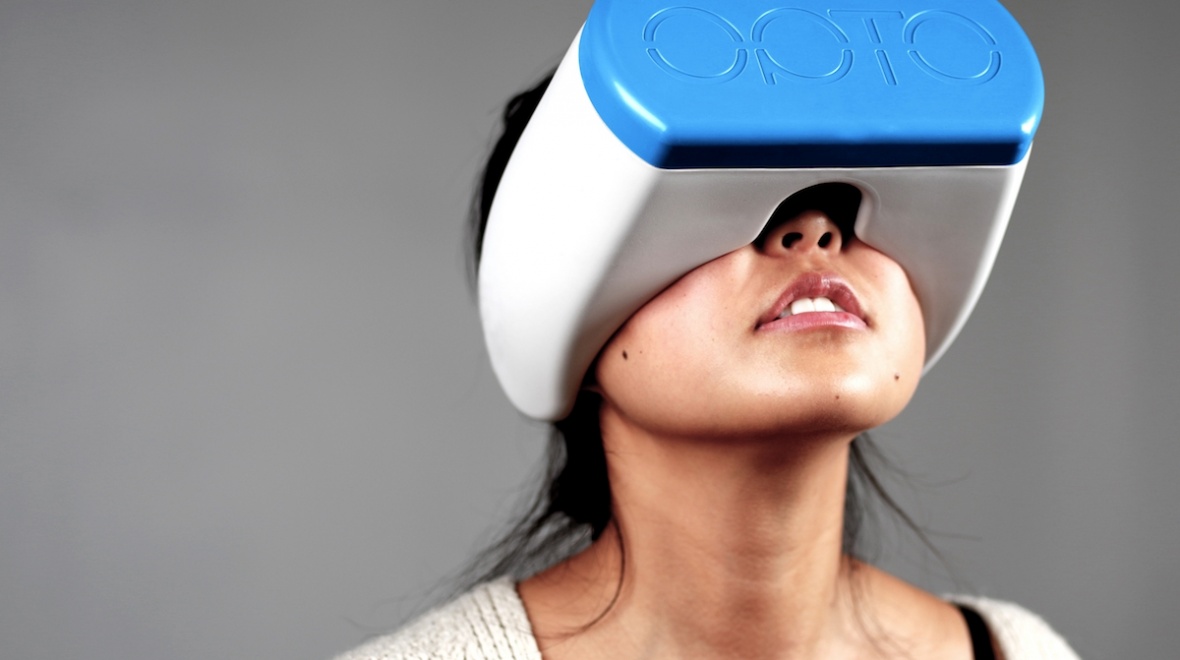Featured Image: London-based startup Opto might be the first company to make quality mobile VR mainstream. According to Wareable, the company’s “Opto Air is made from a lightweight foam, offers built-in speakers plus a 100-degree field of view via double-aspheric lenses which Opto says are 25% bigger than rival mobile VR headsets.” Costing £98, the headset is a strong competitor for the Google Daydream View and Samsung Gear VR.
Instead of making older technologies like personal computers obsolete, AR and VR might be what continues to move traditional computing through mouses and keyboards forward. For Time, Tim Bajarin writes, “Taken together, VR and AR are on track to become the dominant method of computer interaction within the next 10-15 years, driving all kinds of new hardware and software innovations.”

Graphic from U.S. Patent No: 9,560,273, which is one of the two immersive technology-focused patents Apple was granted this week. Source: USPTO
To pounder: How is VR changing the art world? And also the music industry.
For fun: Scent might just be the next step for VR.
This week, Apple was granted two new patents that suggest the next iPhone could be a more VR and AR capable device. According to Haptic.Al, “the patents describe a mobile augmented reality system that can detect its surroundings and displays virtual information to users in real time.”

Example of the Snapchat World Lenses. Source: www.gottabemobile.com
For The Atlantic, Paul Bloom explores the limitations of VR in inducing empathy that consequently can lead to positive change, particularily in the field of charity. While Bloom writes that these VR projects on topics ranging from refugees to homelessness are engaging, he argues “The problem is that these experiences aren’t fundamentally about the immediate physical environments. The awfulness of the refugee experience isn’t about the sights and sounds of a refugee camp; it has more to do with the fear and anxiety of having to escape your country and relocate yourself in a strange land.”
Snapchat is once again updating its filters with a new version of World Lenses, which overlays AR figures onto the user’s surroundings. According to Teen Vogue, “The updated augmented reality feature would take that technology to the next level by identifying specific objects in your environment and letting you add an image directly onto those objects.”
Although mixed reality has been gaining more attention, few have been able to make the experience a reality. In theory, mixed reality “works by scanning your physical environment and creating a 3D map of your surroundings so the device will know exactly where and how to place digital content into that space.” Now in a widely shared video, a software developer connected an HTC Vive headset and a Microsoft Hololens headset to allow “users of both to interact with each other in mixed reality.” Watch the HoloViveObserver app in action below.

